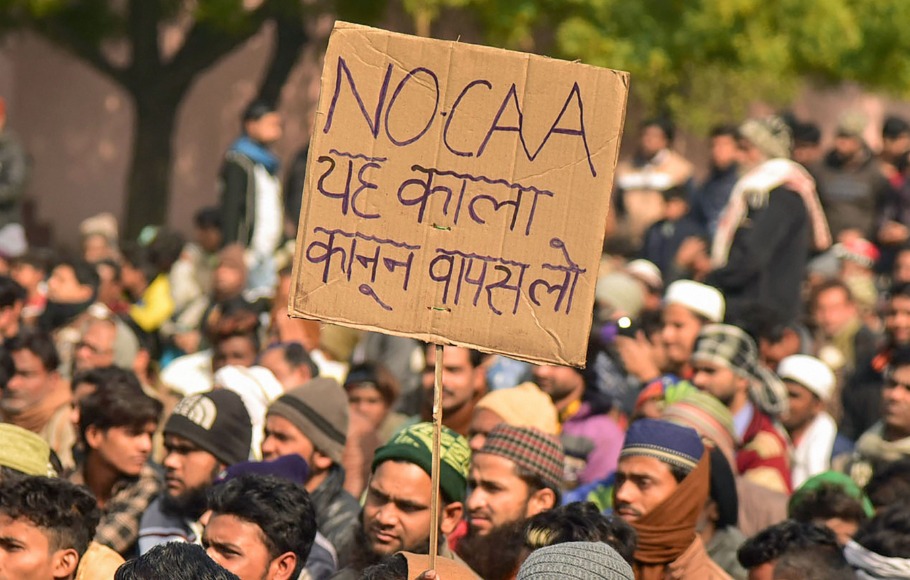
MHA panel sets 1951 cut-off year to define indigenous Assam people
The high-level committee, headed by Justice (Retd) Biplab Kumar Sharma, was set up by the home ministry to suggest ways to provide constitutional safeguards to Assam’s indigenous people

A Home Ministry-appointed committee has recommended that two-third seats in the Assam Assembly should be reserved for the indigenous people of the state and 1951 should be the cut-off year to define the local population, sources said.
The committee has also suggested creation of a legislative council (Upper House) for Assam and introduction of the Inner Line Permit (ILP) to control the movement of people from outside the state, they said.
Related news: Assam NRC data disappears, officials blame ex-coordinator
For the reservation of seats for indigenous people in Assam Assembly, the 13-member panel has recommended two formulas, including a quota of two-third seats (67%) for them.
In case of reservation of seats in the Assam Assembly and Lok Sabha constituencies from the state, all members, except three, have suggested that 67% seats should be reserved for the indigenous people. The remaining three members suggested that the reservation in legislative bodies should be 100%.
“We have mentioned that there is no dissenting note but there are two suggestions for the reservation of assembly and Lok Sabha seats,” a source said.
Related news: SC seeks Centre, Assam’s response on plea alleging exclusion of transgenders in NRC
In addition to the 67% reservation for the indigenous people, 16% will also be reserved for the Scheduled Caste and Scheduled Tribe communities.
“So, effectively, the reservation will go up to 83% if it is accepted,” the source said.
Assam has a total of 126 assembly constituencies, while it sends 14 MPs to Lok Sabha.
The high-level committee, headed by Justice (Retd) Biplab Kumar Sharma, was set up by the home ministry to suggest ways to provide constitutional safeguards to Assam’s indigenous people.
The sources said the panel finalised its report last week, conveyed to the home ministry that it was ready to submit it to Union Home Minister Amit Shah and has sought an appointment with him.
The report is expected to be submitted this week itself.
Related news: No land’s men: Muslim migrants from Assam, WB, live in fear, stigma
The committee, according to the sources, unanimously recommended that those who were residents of Assam in 1951 and their descendants, irrespective of community, caste, language, religion or heritage, will be considered as indigenous people of the state.
Besides, the panel suggested that the ILP should be introduced in Assam so that movement of people from outside the state could be controlled.
As per the rules, outsiders have to take permission from designated authorities before entering the areas where the ILP is applicable.
The ILP, notified under the Bengal Eastern Frontier Regulation, 1873, has been in operation in Arunachal Pradesh, Nagaland and Mizoram for long and it was introduced in Manipur in December 2019 following an uproar over the Citizenship Amendment Act (CAA).
In case of state government jobs, the committee recommended 80% reservation for the locals.
A number of other recommendations were also given for the protection and growth of Assamese and other indigenous languages.
“The committee’s job is over. After its formal submission, the central government can either modify, reject or implement (the report) in toto,” another source said.
The committee was set up in July 2019 as per the Clause 6 of the 1985 Assam Accord. The clause envisages constitutional, legislative and administrative safeguards to protect, preserve and promote cultural, social, linguistic identity and heritage of the Assamese people.
Related news: Why the Assamese feel disowned and alienated by CAA
On February 7, addressing a rally in Assam, Prime Minister Narendra Modi had said the central government will work expeditiously to implement Clause 6 once the high-powered committee submits its report.
In his speech in Rajya Sabha during a debate on the CAA, Shah had said, “In 1985, the Assam Accord happened. There is a provision in Clause 6 to protect the indigenous culture of the state. From 1985 to 2014, the committee was not constituted for Clause 6. I want to assure that the NDA government, through Clause 6, will protect rights of the people of Assam. We have constituted the committee and All Assam Students’ Union is part of the committee. I want them to send the report of the committee quickly,” he had said.
It is to be seen how the central government will implement the recommendations as the Supreme Court has imposed a 50% cap on quota
According to its terms and conditions, “The committee will assess the appropriate level of reservation of seats in the Assam Legislative Assembly and local bodies for the Assamese people. The committee will recommend the appropriate level of reservations in employment under the government of Assam for the Assamese people,” according to a home ministry notification.
Related news: In Assam, songs of Bhupen Hazarika, Zubeen Garg are now protest anthems
Assam has witnessed widespread protests against the CAA. There has been a growing feeling among the indigenous people of the state that the newly enacted legislation will hurt their interests politically, culturally as well as socially.
The Assam Accord provides for detection and deportation of all illegal immigrants, who entered the country after 1971 and are living in the state, irrespective of their religion.
According to the CAA, members of Hindu, Sikh, Buddhist, Jain, Parsi and Christian communities who came to India from Pakistan, Bangladesh and Afghanistan till December 31, 2014, to escape religious persecution will not be treated as illegal immigrants but given Indian citizenship.
The protesters in Assam claim that the CAA violates the provisions of the Assam Accord.HA panel sets 1951 cutoff year to define indigenous Assam people

